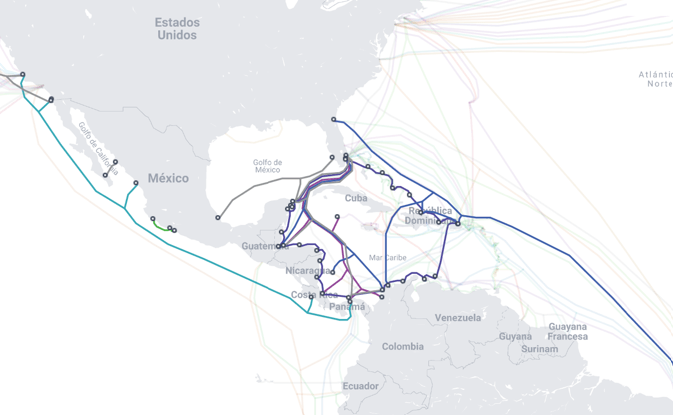Data are also crossing the seas
By KENSA Logistics
Globalization has likewise meant that, in recent decades, goods have been traveling the seas from one end of the planet to another in enormous quantities aboard large container ships. This is how the world economy moves. However, there is a parallel deployment, another equally important movement, of which we seem to be unaware: data. Data which, in huge amounts and in digital format, travel along underwater cables with the information necessary for this trade… and for our daily lives. They are the arteries giving life to the internet.
We are so used to working with data and receiving and transmitting them instantaneously that we never even wonder how they move or how images, invoices or reports reach our screens. In our homes and offices, wireless connections allow us to connect computers, mobile phones or televisions in an invisible way. This immediately brings to mind satellites. However, the truth is that the arteries through which all the information flows, these magnificent highways, are cables made of highly resistant materials which help connect the planet at numerous points. Fiber optic cables and multiple protective layers that are situated on the ocean floor and enable continents, islands and coasts to be linked by multiple points. It is true that satellites also play their role, though it is only to take the internet to highly remote places. 99% of internet traffic uses more reliable and cheaper cables.
Sending information since the nineteenth century
Underwater cables were first laid in the mid-nineteenth century. They were copper wires covered in a special latex called gutta-percha whose mission was to transmit electric telegraph signals. Following a few small routes, such as the one that joined Terranova and New York, the first long-distance submarine telegraphic cable was laid between the United States and Ireland. There was a first failed attempt in 1858, but, in 1866, the definitive cable was installed, uniting the American and European continents. It worked for almost a century and managed, in those far-off days, to make communications, which took an average of 12 days (the time it took a steamer to cross the Atlantic) instantaneous.
From copper wire to optic fiber
Our current cables are heirs to these copper and gutta-percha wires, although much more sophisticated. The core no longer houses the metallic cable but holds fiber optic wires instead. This is a transparent material made from silica which, since the nineteen nineties, has been responsible for transferring data at great speed and without interference. Several plastic and metal layers are placed around the optic fiber to protect the cable, afford it mechanical resistance and ensure it is fully insulated from moisture, corrosion and any accidents. The truth is that, under the sea, the cables can be damaged by marine fauna, anchors, fishing nets and even seaquakes or underwater volcano eruptions. In addition, and in order to ensure that the signal is not weakened along the route, the cables usually have a repeater every 100 kilometers or so.
A map of the cables that join the world
After several decades of laying cables on mountains, valleys and trenches on the seabed, nowadays, practically the whole planet is connected by hundreds of cables. The great information highways cross the Pacific and the Atlantic. Other smaller, but not less important, ones connect different coastal points. Would you like to have more data? At
www.submarinecablemap.com you can consult the development of this infrastructure. In this map, we show you the ones that connect Mexico with the rest of the planet, allowing us to keep our companies operating and our families united.



